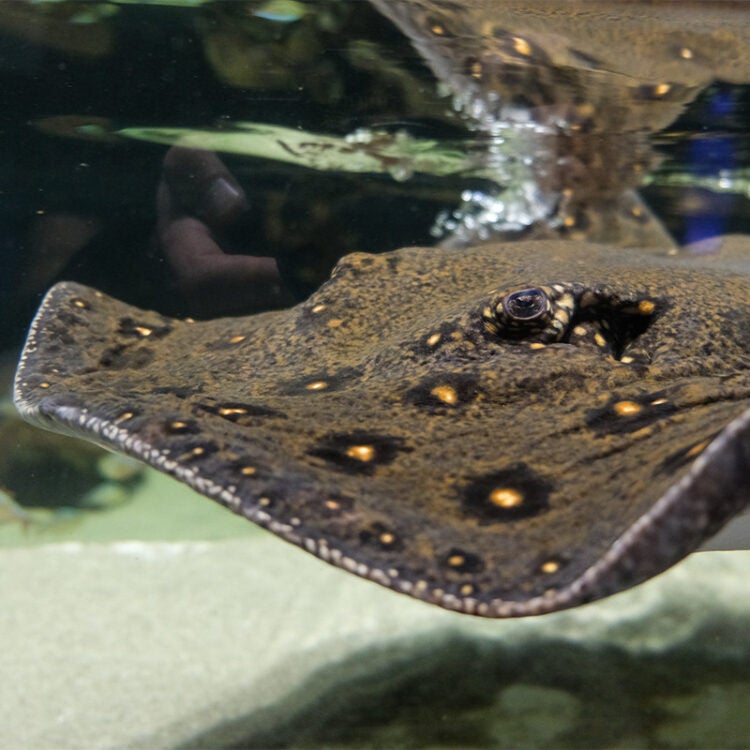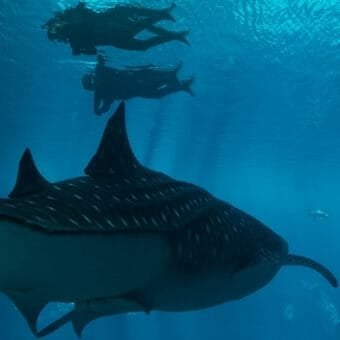-
Size
3.3 feet (1 m) -
Diet
Small fishes and invertebrates -
Range
River basins in Northern South America -
Habitat
Shallow, murky waters
Physical Characteristics
- Coloration is brownish with circular spots on the back and tail.
- Flattened, disc-shaped body. Short tail has no dorsal fin, while its small pelvic fins are tucked under its pectoral fins. Venomous spine on the tail.
- Can grow to about 3.3 feet (1 m) in diameter and weigh 33 lbs. (15 kg).
Animal Fact
The motoro ray's painful venom makes it more feared than the piranha.
Diet / Feeding
- Diet consists of small fishes and invertebrates.
- Commonly lies on the bottom, almost completely covered with sand, waiting for prey.
Range / Habitat
- Occurs in many of the river basins in Northern South America including the Amazon, Orinoco, Parana-Paraguay and Uruguay.
- Found in shallow, murky waters.
Reproduction & Growth
- Ovoviviparous: gives live birth to up to 16 pups at a time.
Conservation Status
- “Data Deficient” on the IUCN Red List.
Additional Information
- Also known as the “ocellate river stingray.”
- Powerful venom in its barb can cause severe pain – this animal is feared more than the piranha throughout its range.
- Barbs are replaced up to three times a year. Stingray barbs are a modified scale made of dentine, an enamel-based material much like dermal denticles on sharks and rays.
- Ancestors are from marine waters.
- Few predators except for some larger fish and the caiman.
Sources
- www.fishbase.org
- Sharks and Rays Guide to the World. Hennemann, R., pg. 221
- Smithsonian Institution Animal. Burnie, D. and Wilson, D., pg. 477





